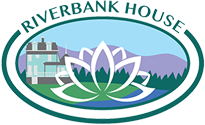
So Many Choices
Finding the best possible drug addiction recovery help is a labor of love (and too often, a labor of desperation.) But it’s also a little like dealing with a funeral home after an unexpected death: grief, immediacy, emotion, and exhaustion can drain us of the strength needed to research our options and comparison shop, as educated consumers.
Finding our way through the vast maze of recovery treatment and drug rehab models and choices can be a daunting task. It is too often a task we face when we’ve already been made bone weary by the relentless consequences of addiction.
With no standardized terms or language to describe or define the different modes and methods of drug and alcohol recovery intervention or treatment, how do we even know what kind of help we’re looking for?
Do we even understand what is meant by drug intervention, detox, acute care, 28-day program, intensive out-patient, intensive in-patient, short term drug rehabilitation, long term drug rehabilitation, extended care program, sober residential community, halfway house, sober house, sober living, addiction therapy, chronic relapse treatment, withdrawal management, drug dependence vs. drug addiction, methadone maintenance, co-morbidity, co-occurring disorders?
How do we know whether an opioid rehab is more effective than a quality sober house or whether a 28 day program includes detox and whether it’s intensive? What about cost and affordability? Does expensive mean “better” or “best”? In all the confusion of catch-phrases, cost considerations, and promotional promises, how do we make a wise, informed choice?
One practical approach to finding effective drug and alcohol treatment is to forget about the addiction industry lingo. We can stop trying to decipher the advertisements and ignore the insistence of our cousin Susie that the best addiction program is that tough-love halfway house her stepson Freddie tried before he went back to jail. We can even set aside, temporarily, our concerns about cost and affordability. Instead we can shift our focus to understanding the most crucial element of effective treatment for drug and alcohol addiction.
Duration of treatment is the most straightforward and easily understood element of effective addiction recovery. If we use program length as our starting point, we’ll proceed efficiently as informed consumers and we’ll be acting in the best interest of our entire family.
What The Experts Say About Length of Treatment
The Center for Disease Control (CDC), is pretty blunt:
Individuals need to be engaged in treatment for an adequate length of time. Participation in outpatient or residential programs for less than 90 days is of limited or no effectiveness.
National Institute for Drug Abuse researchers are unequivocal that “Treatment stays of 90 days or longer were significantly associated with favorable outcomes.”
As researchers from universities, non-profits, and government study the opioid epidemic and publish their findings, a clear and consistent conclusion about treatment duration emerges.
Researchers publishing in Advances in Alcohol and Substance Abuse conclude that time spent in treatment was a major predictor of post-treatment outcomes. They also found that in follow-ups with clients who had spent less than 3 months in treatment, those clients had fared no better in recovery than clients who’d had no treatment at all.
Authors writing in the Journal of Substance Abuse Treatment wanted to “further clarify the relationship between treatment duration and post-treatment outcomes.” Their analysis revealed that:
reductions in illegal activity and increases in full-time employment were related to treatment stays of 6 months or longer for patients in long term residential programs.
Researchers from the Institute of Behavioral Research at Texas Christian University have announced that:
The length of stay in drug abuse treatment has been one of the most consistent predictors of follow-up outcomes, with the general relationship between treatment retention and outcomes being replicated … in all three national evaluation studies.
More recently, the Substance Abuse & Mental Health Services Administration has conducted and published its own studies, called TEDS (Treatment Episode Data Set), concluding that:
Treatment completion and length of stay in treatment are important predictors of positive treatment outcomes. While research shows that adequate lengths of stay in substance abuse treatment are critical for achieving positive treatment outcomes, many clients fail to complete their entire course of treatment (defined as a stay of at least 90 days). Clients who leave treatment early are at an increased risk of relapse.
Length of program — long term treatment (particularly long term residential treatment) of 90 days or more — is the single most important element to consider in our choice of effective drug and alcohol rehabilitation support for the addicted person we love (even if that addicted person is ourselves).
With program duration as our starting point we can prioritize our search, de-emphasizing the confusion of how an addiction program is titled or defined — be it drug intervention, addiction management, relapse prevention, detox, 28-day program, intensive this or out-patient that. And we can begin to find some clarity in cost comparisons and affordability now that we are considering programs with at least one common, effective, and proven denominator: long term treatment of 90 days or more.
Republished with permission from “When We Love An Addict: The Cost of Addiction”
Copyright 2014 Kay Ryan www.whenweloveanaddict.wordpress.com

